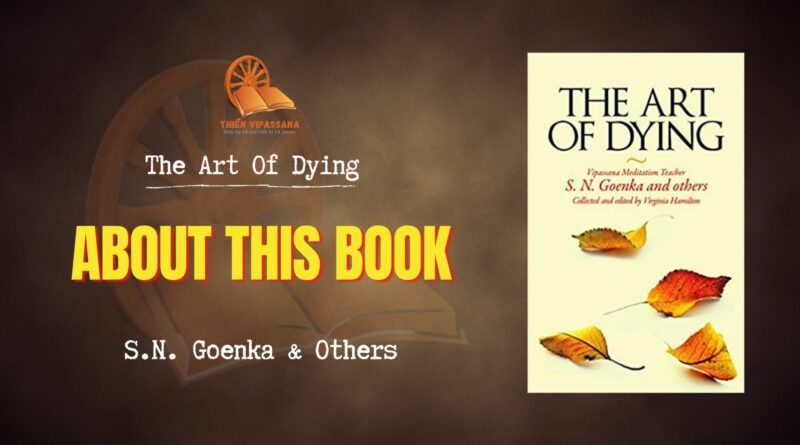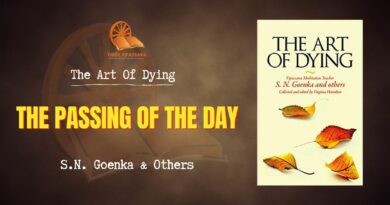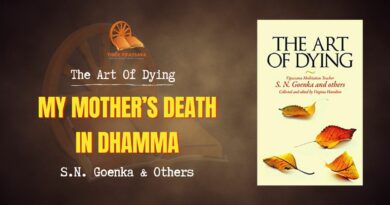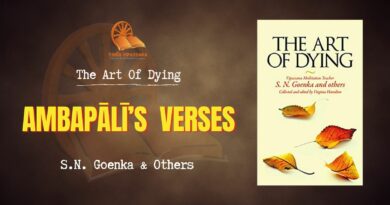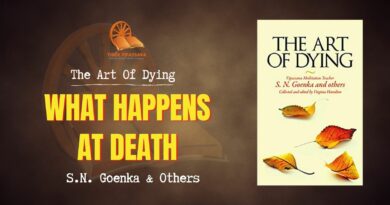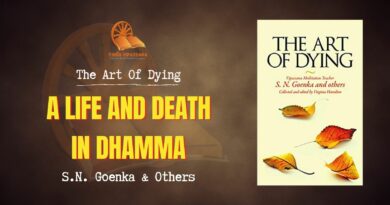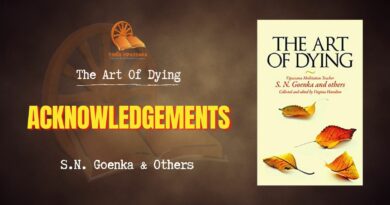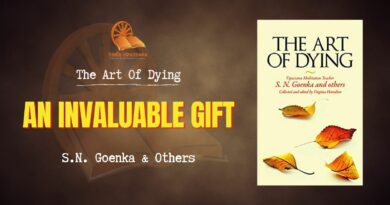About This Book
For many years my husband and I were editors of the Vipassana Newsletter. This afforded us a unique opportunity to hear and see many inspiring stories about meditators who had died bravely and peacefully, filled with the wisdom of their meditation practice. We have read accounts of the deaths of parents, partners, children and friends. Often, as they witnessed their beloved die with contentment and equanimity, those present were filled with an unexpected happiness on an occasion of irreplaceable loss.
The Buddha said, “Two things only do I teach: misery and the way out of misery.” This collection of writings—Goenkaji’s explanations of the teaching of the Buddha, the Buddha’s scriptural verses, poetical stories of monks and nuns from the time of the Buddha, accounts from fellow meditators—is born of the acceptance of the truth of suffering. It contains inspiring examples of people gaining strength and a taste of freedom through their practice, and demonstrates convincingly the efficacy of the Path, the way out of misery.
I have gathered these stories not only to help sustain and strengthen established Vipassana meditators in their quest, but also to encourage others searching for peace and understanding to take up the practice of getting to “know thyself” truly, on an experiential level—to develop their own wisdom.
May you experience the fruits of the Path taught by the Buddha: freedom from the suffering and sorrow that we face throughout our lives.
—Virginia Hamilton
January 2014
About Vipassana Meditation
Vipassana, which means to see things as they really are, is one of India’s most ancient techniques of meditation. It was rediscovered by Gotama Buddha more than 2,500 years ago, who taught it as a universal remedy for universal ills—an “art of living.”
This nonsectarian technique aims for the total eradication of mental impurities and the resultant highest happiness of full liberation. Its purpose is not the mere curing of disease, but the essential healing of human suffering.
Vipassana is a method of self-transformation through self-observation. It focuses on the deep interconnection between mind and body. This mind-and-body connection can be experienced directly by disciplined attention to the physical sensations that form the life of the body, and that continuously condition the life of the mind. It is this observation-based, self-exploratory journey to the common root of mind and body that dissolves mental impurity, resulting in a balanced mind full of love and compassion.
The scientific laws that underlie one’s thoughts, feelings, judgments and sensations become evident. How one grows or regresses, how one produces suffering or frees oneself from suffering, is understood through direct experience. Life becomes characterized by increased self-control, awareness, non-delusion, and peace.
—www.dhamma.org
Bài viết này được trích từ cuốn sách The Art of Dying – Thiền Sư S.N.Goenka và nhiều tác giả khác.

